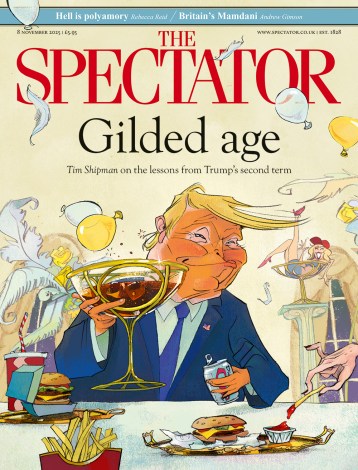Richard Ford is now a forgotten figure and we must be grateful to Ian Robertson for bringing him to life in this scholarly biography. His Handbook for Travellers in Spain was published in 1845 by John Murray as one of his guides for the middle-class tourists who had replaced the aristocrats of the Grand Tour. It must count as the most learned, long and lively guidebook ever published: a monster of 1,064 pages. But his interests extended beyond his hispano- phile concerns and expertise on Spanish painting, making him a much respected figure in London literary and artistic circles in the early years of Queen Victoria.
Ford early made picture-buying Grand Tours. But he was not a landed aristocrat, rather a well-heeled member of the professional upper-middle class with aristocratic connections; a Wykehamist, he sent his son to Eton. In 1824 he married the illegitimate daughter of the Earl of Essex. It was not a success, but it was to give his delicate wife the benefits of a warm climate that he went to Spain in 1830, to remain there for three years. His notebooks and sketches provided the raw material for the Handbook. But as Robertson’s map of his travels reveals, there were large areas of Spain he could not cover in his travels. To plug the gaps he relied on books — he had a fine library — and his extensive correspondence with Spaniards. His vivid descriptions of unvisited towns left his readers with the impression that they were the result of personal inspection.
The gaps and this modest confidence trick were of little importance. He strove to present Spain on its own terms, but the strong prejudices which he shared with his unblemished hero the Duke of Wellington, whose campaigns are a main concern of the Handbook he cannot conceal. Take for example his devastating attacks on the Spanish aristocracy whom Wellington despised as ‘uneducated and untravelled’, ‘popinjay butterflies’, absentee landlords who allow noble ‘patios’ with their artistic treasures to become ‘farmyards and dung heaps’. His francophobia turns the Handbook into a catalogue of the destruction and looting of Spain’s artistic heritage by French generals in the Peninsular war. After his last visit to Paris, when France was our ally in the Crimean war, he writes, ‘I have come back hating the French worse than ever.’
While he admires Castile, his portrait of Catalonia is a crude caricature, ‘no place for a man of pleasure, taste or literature. The lower orders are brutal.’ His observations on Murcians and Andalusians would have been dismissed by Edward Said as those of a covert racist. The Andalusians’ ‘Moorish fatalism’ leads them to allow the great monuments of Islamic civilisation to collapse into ruins; the curators of the Prado are a collection of ignoramuses. Nevertheless, his admiration for the Spaniards, other than aristocrats and politicians, as individuals, generous, noble and lacking the British cold, class-conscious snobbishness earlier deplored by Southey, shines through the book. But as a nation ‘their only idea of government is despotism’; they are ruled by ministers who are incapable, corrupt rogues. This was the favourable view of the Spanish people he bequeathed to history. His legatees include Macaulay and Gerald Brenan, more distantly even George Orwell.
After Spain he settled in Heavitree, then a rural suburb of Exeter, in order to write the Handbook. This finished, he found a career as a prolific reviewer, warned by his friends not to waste his talents as a historian on ‘periodical trumpery’. As a reviewer he could be savage. A bigoted Tory, his attacks on Manchester radicals and on the Whig Palmerston were violent in an age that did not mince words. ‘We are,’ he wrote, ‘all skating on rotten ice with the deep and dangerous whirlpool of democracy below.’ The bibliophiles of the Roxburghe Club were egregious fools ‘in electing no end of magnificoes who care nothing for the matter’ (i. e. books). But like many men who are violent in public, he was kind at heart, unwilling to sacrifice a pleasant social life to the demands of political correctness. Tory though he was, he joined the Whig sanctum of Brooks’s. He became the ‘chum’ of George Borrow, author of The Bible in Spain, promoting the career of that eccentric genius though he was patronised by the leading radical John Bowring. He was not the man to reject the company of a pretty woman on account of her views. His third wife, 26 years his junior, was the sister of Sir William Molesworth, the most prominent philosophical radical of the time. It was during his marriage that he became a lavish host, the lion of London literary society that Robertson reveals.
He returned to die in Heavitree. The local aristocrats he had found Devonian ‘clods’, the women ‘very ugly’. Since he regarded fox-hunting as no better than bullfighting, how he survived in the sporting society of the West remains a mystery.




Comments